News
View the latest inspiring and positive news and information about what's going on in the PM and IT world.
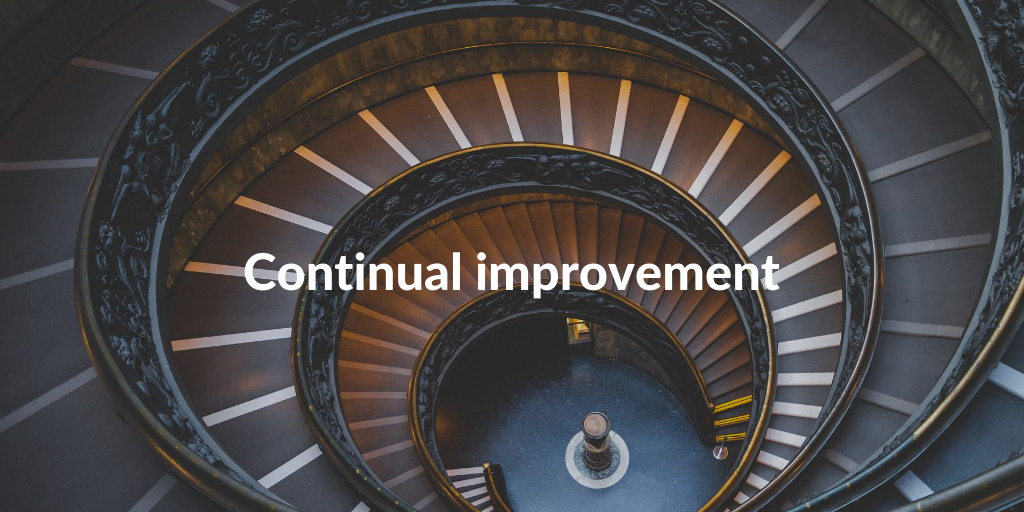
Date: 11/08/2020
The ITIL 4 continual improvement model is what in ITIL v3 was called the 'continual service improvement (CSI)'.
It is a recurring organizational activity performed to make sure the organization is aligned with the stakeholder's expectations. The continual improvement model is part of the Service Value System (SVS).
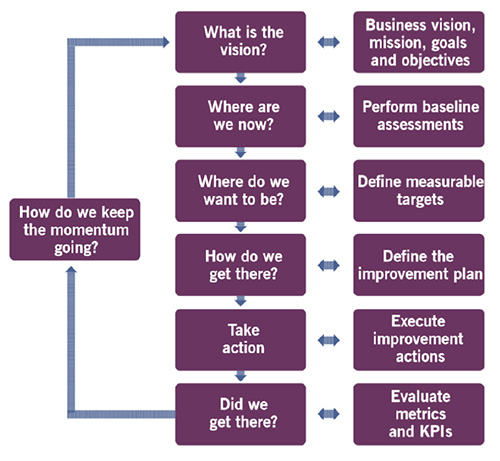
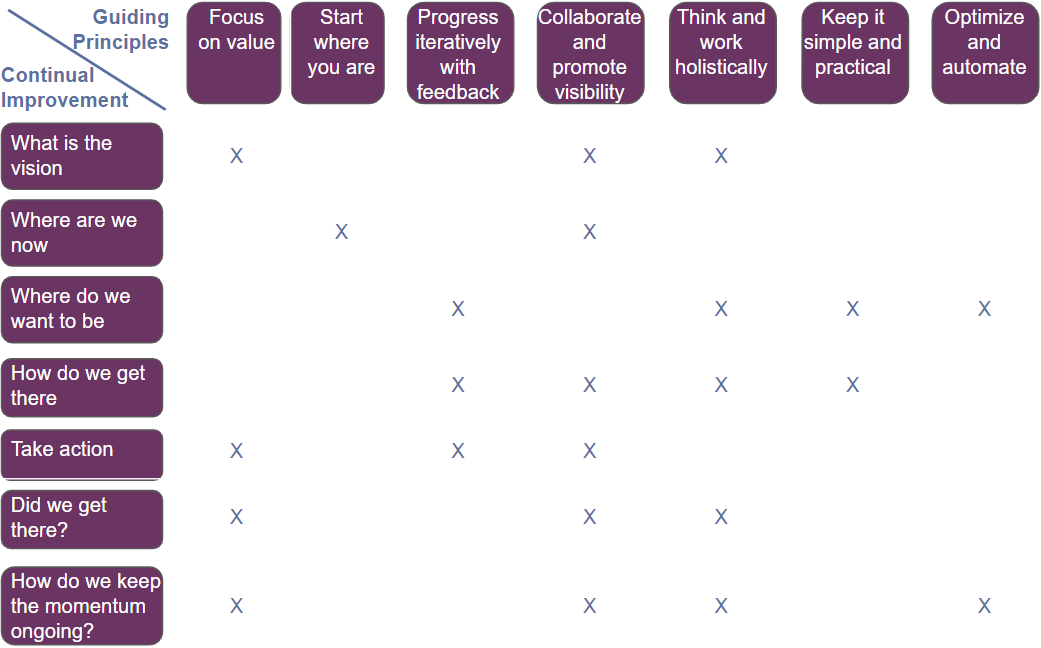 Are you looking for a clear overview of the 7 ITIL guiding principles? Download it here for free!
Are you looking for a clear overview of the 7 ITIL guiding principles? Download it here for free!
 Source: ITIL Guiding Principles for Continual Improvement Axelos
Source: ITIL Guiding Principles for Continual Improvement Axelos
Read more
What is the continual improvement model?
The Continual Improvement Model provides simple and logical steps for an improvement initiative at any scale. It can be seen as a guide to help sustain improvement initiatives, from the very beginning to the end. The model has an iterative approach, which means it divides the work into manageable pieces with set goals. Using the model increases the possibility that ITSM initiatives turn out to be successful. The continual improvement model puts focus on customer value and makes sure that all improvement initiatives are linked to the organization’s vision. The model is applicable to very small initiatives like service or operation improvement, but also to organizational changes. The approach is always the same, the techniques can differ depending on the size of the initiative. The continual improvement model is shown in the image below.
How to use the continuous improvement model?
Depending on the type of improvement you are planning, the steps of the improvement model can vary significantly. It's important however to follow all the steps for each improvement. The steps are:. What is the vision?
The improvement should support the organization’s goals and objectives at all times. It should also link individual actions to the future vision, in order that it really can be seen as an improvement.. Where are we now?
In order for an improvement to really impact, it should have a clear starting point. The step ‘where are we now’ helps you to assess your current situation, from a technical, human resource and user’s perception perspective.. Where do we want to be?
This step helps you visualize your improvement initiative. Here you set your Key Performance Indicators (KPI’s) and the objectives of the improvement initiative.. How do we get there?
The fourth step helps you plan. The continual improvement model advises to work iteratively, however with some initiatives this might not be needed and another approach will suffice.. Take action!
Execute the plan that you created in the fourth step. A measurement process is key in this step as it will help you stay on track. To execute the plan you can use any type of approach that you think fits best (waterfall, big bang or small iterations).. Did we get there?
Check and confirm the progress and the value of the improvement initiative. If the desired result has not been achieved, additional actions need to be taken (often in a new iteration).. How do we keep the momentum going?
If the initiative is a success, use it to build support and momentum for the next improvement initiatives. To do so, share the success both internally and externally. If the initiative failed to achieve success, make sure to use it for your ‘lessons learned'. This way the initiative did create value, even though it was not a success.Three tips to apply the continual improvement model
If the continual improvement model is embedded well in your way of working, it will help you stay aligned and increase user engagement. To help you do this, make sure you look for the right initiative to take on, be proactive and stay organized!Choose well
There are always opportunities for improvement, especially in IT services and support. To understand what type of improvement initiative you like to perform, you have to start to look at the pain points. Improving these services will help you create the biggest benefits.Be proactive
Pro-activity will help bring the results of the continual improvement model to light. Continual improvement is not just about fixing current pain points, it is also about being more future-facing. Processes are not static and will change if you are ahead of this change you will be in a more comfortable position.Stay organized
Create a register for all the improvements you are planning to make. This will help you prioritize and know what things to focus on next. A register for improvements can be very simple, a shared document with the improvement, time-frame and explanation will do!The 7 ITIL guiding principles applied to the continual improvement model
The 7 ITIL guiding principles and the continual improvement model are key to the ITIL Service Value System (SVS). Both are applicable to all of the other SVS components and together they ensure that the SVS as a whole operates with integrity and agility. Applying the Continual Improvement Model can optimize services and maximize success. The guiding principles are a great help in planning and managing an effective improvement. That is why it is strongly recommended to keep each of the principles in mind while establishing the Continual Improvement practice. All the 7 ITIL guiding principles are applicable and relevant at every step of an improvement initiative. The level of applicability of the principles at every improvement initiative, however, may vary. Some guiding principles are extra relevant to specific steps of the continual improvement model. To know what principle to keep in mind at which step of the continual improvement model, see the following overview. Are you looking for a clear overview of the 7 ITIL guiding principles? Download it here for free!
Are you looking for a clear overview of the 7 ITIL guiding principles? Download it here for free!
 Source: ITIL Guiding Principles for Continual Improvement Axelos
Source: ITIL Guiding Principles for Continual Improvement Axelos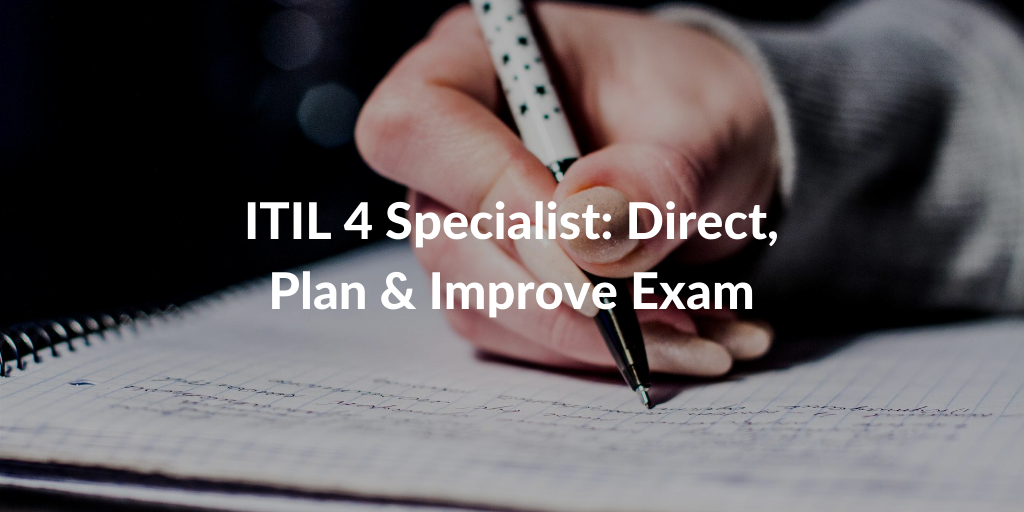
Date: 05/08/2020
The purpose of the ITIL 4 Direct, Plan & Improve is to provide the candidate with an understanding of how to integrate different value streams and activities, of service performance, service quality and improvement methods.
Thanks to this understanding, the candidate will be able to create, deliver and support IT-enabled products and services, and relevant practices, methods and tools.
To take the exam, the candidate must have passed the ITIL 4 Foundation examination. Also, the candidate must have attended an accredited training course for this module.
Work experience in IT services is recommended.
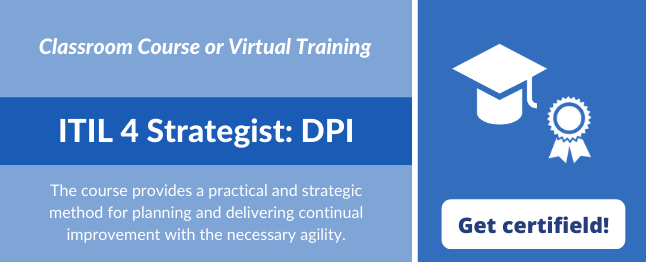
Read more
ITIL DPI Examination Target
- Individuals continuing their journey in service management.
- ITSM managers and aspiring ITSM managers.
- ITSM practitioners managing the operation of IT-enabled & digital products and services, and those responsible for the end-to-end delivery.
- Existing ITIL qualification holders wishing to develop their knowledge.
Exam Format
- Language: English and French
- Duration: 90 minutes
- Candidates taking the exam in a language that is not their native or working language may be awarded 25% extra time, i.e. 113 minutes in total.
- Materials permitted: No materials other than the examination materials are permitted. This is a ‘closed book’ examination.
- Questions: 40
- All 40 questions are Objective Test Questions (OTQs).
- Pass Mark: 28 marks or above.
- Level of Thinking: Bloom’s levels 1 & 2
- There are 15 questions at Bloom’s Level 2 = approx. 37.5%
- There are 25 questions at Bloom’s Level 3 = approx. 62.5%
- Exam Format: Online or Paper
- Certificate Format: Online
- The online certificate is usually included in the exam fee, you could ask for a paper certificate to the Exam institute after your exam.
- Prerequisites: The candidate must have passed the ITIL 4 Foundation examination. In addition, the candidate must have attended an accredited training course for this module (the recommended duration for this training is 18 hours including the examination).
ITIL 4 Direct, Plan & Improve (DPI) Exam Sample Questions
All 40 questions are Objective Test Questions (OTQs), which present four options from which one option is selected. Question styles used within this type are: ‘standard’, ‘list’, and, exceptionally, ‘negative’ standard OTQ.Example ‘standard’ OTQ:
What describes improvement? a) Q b) P c) R d) SExample ‘list’ OTQ:
What is required in an operating model? 1. It does Q 2. It does P 3. It does R 4. It does S a) 1 and 2 b) 2 and 3 c) 3 and 4 d) 1 and 4 NOTE: Two of the list items are correct. List style questions are never negative.Example ‘negative’ standard OTQ:
What should the management team NOT do when identifying excessive controls? a) Q b) P c) R d) S NOTE: Negative questions are only used as an exception, where part of the learning outcome is to know that something is not done or should not occur.ITIL 4 Direct, Plan & Improve (DPI) Objectives
The purpose of the ITIL 4 Direct, Plan & Improve examination is to assess whether the candidate can demonstrate sufficient understanding and application of the ITIL 4 Direct, Plan & Improve module. The ITIL 4 Direct, Plan & Improve qualification is one of the pre-requisites for the designation of ITIL 4 Managing Professional. As a candidate you need to demonstrate the achievement of these learning outcomes:- Understand how to plan and build a service value stream to direct, plan and improve services
- Know how relevant ITIL practices contribute to directing, planning and improving the SVS and value streams
- Know how to direct, plan and improve services
The ITIL 4 Direct, Plan & Improve (DPI) Certificate
The candidate that passes the exam with positive marks, will obtain the certification. The online certificate is usually included in the exam fee, you could ask for a paper certificate to the exam institute after your exam. QRP International is an ITIL Accredited Training Organisation (ATO) by Peoplecert on behalf of Axelos. We are authorised to deliver ITIL 4 MP Direct, Plan & Improve (DPI) courses and can prepare you for the examination leading to the ITIL 4 Direct, Plan & Improve (DPI) Certificate in IT Service Management.
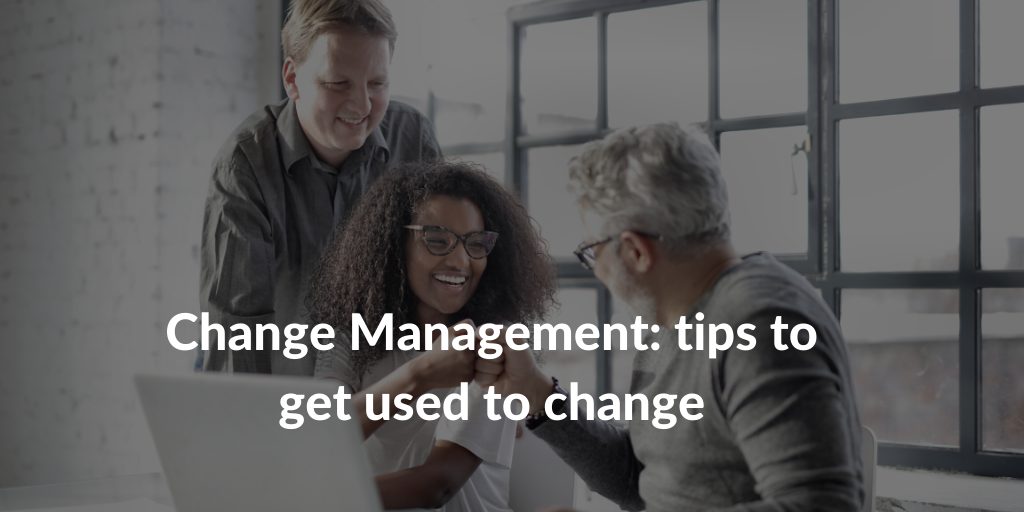
Date: 28/07/2020
Alessia works as NOC Change Coordinator for ESA at Capgemini. She is Change Management certified and she's planning to get Project Management certification too. Alessia is dealing with numerous change requests to successfully complete the project where she's involved.
Here are the questions we asked.

 Alessia works as NOC Change Coordinator for ESA at Capgemini. She is Change Management certified and she's planning to get Project Management certification too.
Alessia is dealing with numerous change requests to successfully complete the project where she's involved. She daily gets in touch with the different communities for their deliverables to be finalised. In a very challenging environment, rumours and resistance are sometimes visible. In an international environment like this, new ideas and incitements are always welcome and these give her the chance to compare with different minds, approaches and cultures. That's why changes and individuals always have to take care of mental framework and personal circumstances.
Alessia works as NOC Change Coordinator for ESA at Capgemini. She is Change Management certified and she's planning to get Project Management certification too.
Alessia is dealing with numerous change requests to successfully complete the project where she's involved. She daily gets in touch with the different communities for their deliverables to be finalised. In a very challenging environment, rumours and resistance are sometimes visible. In an international environment like this, new ideas and incitements are always welcome and these give her the chance to compare with different minds, approaches and cultures. That's why changes and individuals always have to take care of mental framework and personal circumstances.
Read more
1. What's your current job title? What do you actually do?
I am a Capgemini employee and since 2014 I work as a contractor for ESA (based in ESRIN-Frascati). However, from November 2019 I cover the role of NOC Change Coordinator for a specific project related to the network infrastructure. I am acting as SPOC and keep relationships with the numerous departments who have to migrate their devices and servers into the security zones (it is a new network architecture). I participate in Boards, coordinate and plan the delivery of the security zones. I keep the users informed of every update. Change requests are registered into the ticketing system we have in place, whose name is BMC Remedy.2. What is the thing you love the most about your job?
The thing I like the most is the international context that surrounds me. ESA is, of course, a European identity, but its borders go way beyond. I daily interact with people from every nation with different cultures and perspectives. This constantly gives me the chance to understand their minds and put myself in their shoes.3. What are, in your opinion, the key things to adapt to changes? And how do you apply them in your job?
Change is a difficult and long process involving so many factors and it is hard to identify the key points. But if I have to summarize they would be:- Personal experience of everyday life
- Extrinsic-intrinsic factors
- Communication plan
4. What's the biggest issue/change you see in your community at the moment? And what's your advice on how to solve/face this issue/change?
At the moment, the biggest change we are coping with is adopting Microsoft Office 365. The ESA community is currently using HCL Notes over 20 years. So, it is not and it will not be easy to switch. There were some rumours one year ago about it and it has been difficult to reply to some questions raised by the users while this was not officially confirmed. Adopting Office 365 is in progress now. It started a few weeks ago with a pilot phase for IT users only. This will help the project team to understand the system and change the plan if needed, by deleting, adding or improve something along the way. There is still much resistance despite having explained the advantages. People remain in their position and will take time to adapt to the change. Interpersonal and mass communication is in progress now to try to fight resistance. So, ending transitions are important stages still in progress, a new beginning will come.5. Change Management during teleworking: how does it go?
Change requests run the same now that we work from remote as before when we were in the office. Remotely we have access to all the systems we daily work with. Business is proceeding and also increasing. All the steps for good change management are in place with very few difficulties. Collaboration tools, such as Webex, Skype or mobile devices, allow us to meet and discuss the changes we have to move forward and agree on what the deliverable has to be. Implementing powerful strategies during Covid-19 situation is challenging and stressful since we are used to working in a bigger physical environment and to be surrounded by colleagues. Keeping concentration despite the confinement has been, and is a huge effort.6. Would you like to share some good examples (and bad) of Change Management?
The theory says that good examples of change management are the ones without impacts for the users. Basically it is applying a change while users continue their work without any disruption of the service. However, I do not fully agree with this. In my experience, a very bad example occurred while applying the Microsoft patches to the servers hosting some services. The network fell down for all users, generating mess, stress and severe complaints. The back office team, with me as the Change Manager, had to face hard times to recover from the situation. We had to write down the RCA, root cause analysis to deliver to the site manager and the Head of IT end users services. A rollback plan has been applied which saved the situation.7. What are three things you’ve told yourself that you would like to learn in the next future to develop you as a professional?
Reaching the Change Management certification is already a great step. To keep on developing my personal career I would like to learn more about Project Management, even if I already work closely with it. I see every change as part of a project, maybe we can even say it is a little project itself. I studied the PMBOK but also getting the certification would mean a lot to me. I always look for positive energy and motivation that help to confront me with challenges. Another thing I like to do is to move to the Netherlands. I am working on trying to be relocated as soon as possible. That would represent a new start for my personal life and for my professional path, too. I already lived abroad, in the Middle East, in Kuwait City and it was a great experience. This was a huge change for me. Applying Change Management in another framework, in another customer’s reality. It’s always challenging to find out new climate and environment. Shaping a new network of agents and roles to play.
Alessia Pisciotti
 Alessia works as NOC Change Coordinator for ESA at Capgemini. She is Change Management certified and she's planning to get Project Management certification too.
Alessia is dealing with numerous change requests to successfully complete the project where she's involved. She daily gets in touch with the different communities for their deliverables to be finalised. In a very challenging environment, rumours and resistance are sometimes visible. In an international environment like this, new ideas and incitements are always welcome and these give her the chance to compare with different minds, approaches and cultures. That's why changes and individuals always have to take care of mental framework and personal circumstances.
Alessia works as NOC Change Coordinator for ESA at Capgemini. She is Change Management certified and she's planning to get Project Management certification too.
Alessia is dealing with numerous change requests to successfully complete the project where she's involved. She daily gets in touch with the different communities for their deliverables to be finalised. In a very challenging environment, rumours and resistance are sometimes visible. In an international environment like this, new ideas and incitements are always welcome and these give her the chance to compare with different minds, approaches and cultures. That's why changes and individuals always have to take care of mental framework and personal circumstances.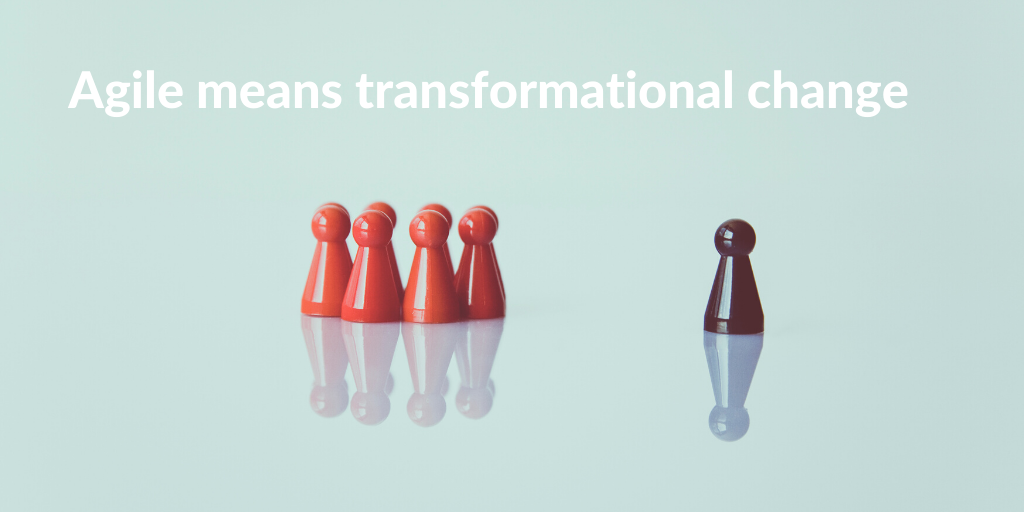
Date: 24/07/2020
Setting up and running a PMO is a difficult and long-lasting task.
To get inspired and learn the basics, you can get a certification and learn the foundations. Translating this inspiration into practice is the second step. This is often hard and lonely as a strategic PMO and it can be good to sometimes change ideas with other PMO’s.
That is why QRP decided to set up a PMO User group. We invited a group of very different PMO to discuss different topics in different sessions.
Interested to join us next time? Contact us directly!
For our first PMO user event session this June (2020), we set the topic:
‘How to insert more agility in a traditional project management environment?’
QRP invited a speaker that presented their case study of the introduction of Agility in their organisation.
After the presentation, the group was divided into smaller groups to discuss certain aspects of Agility in connection to the PMO. To reinforce our discussion and add some extra information, QRP decided to dedicate a blog to the introduction of Agility and the responsibilities of the PMO that come along with it.

Read more
Implementing Agility
There is no one answer on how to implement Agility in the PMO, there are multiple possibilities. This also because there are different Agile Frameworks, there are different options for an organisation to become more Agile. The organisation needs to choose its path to an increased Agility and decide what fits their situation. However, even more, important than how to implement Agile is the reason why to implement Agile. If the reason to implement Agile is simply that it is a business buzz-word, it is likely that it will be a failed attempt. Becoming more Agile is something that needs to be communicated clearly and carried out by the entire organisation. Becoming more Agile is and needs to be seen as a change.Agility and the PMO
When it comes to implementing Agility in the PMO, there are some key elements of MSP (Programme management) that could be applied to increase the chances of success.These key elements are:
. A clear vision A compelling picture of the future of the organisation, explaining the reason behind the change . Inclusion and clear communication All different stakeholders should be included and aware of the ongoing change. All stakeholders also need to be aware of what is expected of them. . A blueprint of the ‘to-be organisation’ An architecture that combines processes, organisational design, supporting technology and necessary information flows . Focus on the benefits This should be shared with the complete organisation, in order to inspire and motivate people What Agile framework to implement has to depend completely on the organisation and the different teams. Agile is not suited for every project and that should not be a problem, as Agile can also be applied partly. It is absolutely possible that Agile is more applicable to some processes than others. This can also mean that some teams can adopt an Agile framework, and other teams do not. Chances are likely that Agile is more easily picked up by the IT department of an organisation. However, this does not mean that you should limit your Agile transformation to just IT.The role of the PMO during an Agile Transformation
Every organisation should consider their current situation and find their way to implement Agility. In order to do so, it involves a mindset change on all levels in the organisation. Introducing Agile means transformational change. The PMO plays very important (and different) roles in this transformational change. The PMO has to find out when and how exactly to integrate Agile practices in projects. In order to do so, the PMO needs to prioritize and provide daily guidance. The PMO will also need to coach and train people in the Agile way of work. Next to this, the PMO also has a very practical role, as it is responsible for standardisation of way of work and harmonising use of tools. That being said, we can conclude that the role of the PMO changes enormously if Agility is introduced in a traditional project management environment. The PMO needs to be prepared and ready to face obstacles. The PMO needs to understand very clearly what needs to happen and needs to be convinced of why. In this, clear communication and perseverance by the PMO are key to a successful Agile transformation.

Date: 22/07/2020
Formula 1 (F1 for short) is and has been a favourite sport of mine since I was a kid. Extreme commitment, phenomenal engineering and precision skills are just a few of the attributes necessary to compete and succeed.
I’ve been meaning to write this article for some time, having long observed some fundamental principles of Agile working in the world of F1, leading me to believe there is no better example of organizational agility in sport.
The unprecedented situation we currently find ourselves in – and furlough leave for me personally – has presented the opportunity for a brain dump!
Before I get into the detail, let me first clarify my position. A disclaimer if you like! I am not an Agile practitioner per se (i.e. Developer, Business Analyst, Project Manager), however, my current role involves the promotion of Agile Project Management guidance and supporting certifications, and I feel I have a decent understanding of the core principles of Agile working and development.
In short, I’m not professing to be an Agile expert in any way, shape or form. But based on my understanding of the core principles, I see some striking similarities between the world of F1 and the Agile way of working. Additionally, I am assuming that readers have a prior understanding of the core principles of organizational agility.
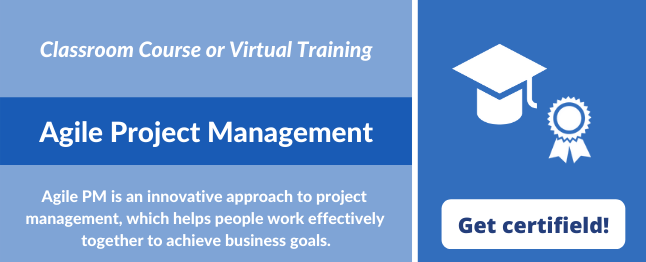
 Mark is a Marketing Manager at APMG International and works closely with the Agile Business Consortium on the promotion of Agile guidance, training and certification for project, programme, business analysis and Scrum professionals.
Mark Constable on LinkedIn
Mark is a Marketing Manager at APMG International and works closely with the Agile Business Consortium on the promotion of Agile guidance, training and certification for project, programme, business analysis and Scrum professionals.
Mark Constable on LinkedIn
Read more
F1 for the uninitiated
Not everyone that reads this will be a Formula 1 fan, so I should start by setting the scene a little. Formula 1 is the pinnacle of global motorsport consisting of 10 teams (constructors), each with two drivers. Often billed as the world’s most extravagant travelling circus, the competition sees teams travel the globe racing in over 20 different countries, each contributing to the sport’s two major crowns: The Constructors (for the teams) and Drivers World Championships. Teams spend millions every season designing and building their cars, and continually seeking performance gains over the course of the season. In most walks of life a few tenths of a second sounds quite insignificant, but in the world of motorsport – in terms of a deficit to your competitors – it's a significant gap to bridge. A two-tenths deficit could be the difference in qualifying five or six places down the grid, rather than on pole position.What makes F1 so Agile?
An F1 season is a development race, driving the necessity for constant adaptation and evolution to enhance competitiveness. During pre-season, teams develop their latest challengers through extensive design and simulation, supported by limited on-track testing. Teams arrive at the first race of the season with the fruits of their pre-season development work. But this is far from the finished product. F1 cars are constant prototypes; throughout the season cars continually evolve through mechanical and aerodynamic modifications. In this article I am focusing on three core Agile principles – the minimum viable product, user testing and iterative development – and how I see them in the world of F1.The car at the first race: the Minimum Viable Product (MVP)
Unfortunately, it’s not a simple case of paying your entry fees and bringing along your glorified soapbox to the starting grid. There are detailed regulations covering all aspects of F1 car design & development, from the power unit that drives the wheels to the complex aerodynamics and suspension setups that determine a car’s fundamental performance. Additionally, the rules effectively require you to be competitive. For a team and driver to take their place on the starting grid for each race, the rules stipulate you must post a qualifying time that is within 107% of the pole position time. So, come qualifying for the season opener if you have a car that.… Adheres to the sport’s technical regulations; and Is competitive (i.e. can achieve a lap time within 107% of the pole position time) .…then you have your minimum viable product for going F1 racing. But that is just the start; never in the history of the sport has a team arrived at testing or the first race with the perfect car for all rounds of the ensuing championship. Teams know that this initial concept is simply the basis for ongoing development and fine-tuning.The Driver: user testing
Modern F1 is data-driven. An incredible array of sensors blankets the modern F1 car, measuring everything from the tyre and brake temperatures, to suspension, aerodynamic and engine performance. This array of sensors enables teams to gather huge amounts of data over the course of a race weekend (well over 3 terabytes in fact!), revealing various aspects of car performance and highlighting potential areas for improvement. But there is one more, somewhat larger ‘sensor’ that offers tremendous additional feedback on performance – the driver. The driver is comparable to the user of the software or a product delivered by an Agile project or development team. And as any Agilist knows, user testing and feedback are vital. It is no different in F1. Whilst the teams benefit from huge amounts of data via the sensors outlined above, it still all comes down to the driver. If all the data suggests you have the perfect car, but the driver is unable to extract the perceived performance, you have a big problem. While sensors are great, they are no substitute for the feelings a human being experiences during mind-bending cornering speeds and travelling over 200mph a matter of centimetres above the ground. The driver (user) and his/her feedback are therefore crucial for developing and upgrading the car, just as user feedback is critical in helping a development team design a new software package.Constant evolution and iterative development
Just as fast and furious as the battle on track, the race to bring car updates and out-develop rivals across the course of the season is often where championships are won and lost. There’s a romantic desire amongst us enthusiasts to see championships won purely on the skill of the drivers or the brilliance of the initial technical concept, but the reality of F1 is that success requires a third element: the speed at which the team can develop through the season and continually reinvent their car. Engineers are constantly searching for improvements to gain those vital milliseconds and improve other key areas of performance such as stability and reliability. Seldom will a car be the same from one race to another. With (currently) 21 races over the course of an 8-9-month season, there is a phenomenal amount of iterative development going on in the background. Each and every lap over the course of a race weekend (three practice sessions, qualifying and the race) provides the data that teams and their engineers use to fine-tune setup and components of the car, generating a constant stream of upgrades. Evolution and development are constant. If they are not, you simply will not succeed in F1.The need to adapt, and fast
One of the fundamental challenges of all racing is that no two racetracks are the same. Similar, perhaps, but definitely not the same. These differences can fundamentally affect a car’s performance and lap time compared to its competitors. Consider the Monza circuit in Italy, dominated by long straights with a limited number of corners, versus the tight, twisty & bumpy confines of the Monaco street circuit. Each requires a fundamentally different setup for the car from engine mapping to aerodynamics. Even the nature of the track’s asphalt surface will impact on car performance, particularly how it looks after its tyres; crucial to race-long performance. Of course, there is another major factor at play – the weather! Cars perform and behave very differently based on the track and climatic conditions (e.g. hot/cold track surface, wet/dry track, wind speed, etc). The varying nature of the specific challenges of each race weekend throughout the season demands a level of adaptability more, arguably than any other sport. F1 teams know this and embrace it.Summary
Formula 1 teams and their operations have evolved significantly over the years to become highly efficient and adaptive, enabling rapid development and constant evolution of their cars and performance. There is much for organizations, leaders and teams to learn from agility in F1 and I would encourage a review of the articles below for more. Agile principles are no doubt prominent in many other sports, but I personally struggle to think of another that demonstrates Agile working principles at such scale. I have only explored a few of the fundamental Agile principles here too. No doubt I could have gone much further with planning, sprints, backlogs, etc. Maybe for a follow-up article! Original article published in May 2020 and reproduced with kind permission of Mark Constable, APMG International.
Mark Constable
 Mark is a Marketing Manager at APMG International and works closely with the Agile Business Consortium on the promotion of Agile guidance, training and certification for project, programme, business analysis and Scrum professionals.
Mark Constable on LinkedIn
Mark is a Marketing Manager at APMG International and works closely with the Agile Business Consortium on the promotion of Agile guidance, training and certification for project, programme, business analysis and Scrum professionals.
Mark Constable on LinkedIn

Date: 15/07/2020
One thing you cannot deny in business is change.
Change is not always negative or positive, however it is always different. Change is omnipresent - whether driven by technology or economic or other factors; the indisputable fact is you are asking people to change.
Change is present in any organisation at any size. Some organisations, especially the bigger ones, have specific departments that focus on change. However, that does not mean that change does not happen in smaller organisations, it might just not be recognized as ‘change’.
Change is becoming more and more important and will be so in the future too. Organisations in any kind of field are experiencing changes under the current digital revolutions. Whether it is the digitization of documents, automation of processes or machine learning, change is everywhere and constant.
To be able to guide this change, organisations need to recognize it and embed change within their organisations. Their staff will have to get used to a different way of work, change their mindset and change their habits and behaviour.
With this outset, the Change Management skills people and organisations are going to need are only becoming more important as technology moves on.
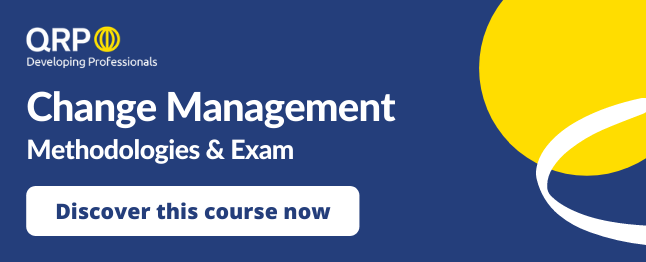 Source: APMG
Source: APMG
Read more
Key Skills to Prepare for the Coming Years
You can divide skills into five different types namely:- physical & manual skills,
- basic cognitive skills,
- higher cognitive skills,
- social and emotional skills
- technological skills.
- Project management
- Creative thinking and decision making
- Complex information processing and interpretation
- Advanced communication and negotiation
- Leadership and managing others
- Adaptability and continuous learning
- Advanced IT skills and programming
- Advanced data analysis and mathematical skills
- Scientific research and development
Key Change Management Skills
Change is increasing and organisations can no longer ignore it. To help embed this change within the organisation, an organisation can benefit from Change Management. Change Management includes a very rich skillset. A skill set that helps to increase people engagement and includes many different soft skills. The key Change Management skills are very diverse and most of them fall under the type ‘social and emotional skills’. For example, while preparing your staff in a different way of work, you need great interpersonal skills, but also a great deal of empathy. To get people to change the work they have been doing for years is not as easy as it sounds and it is important to listen to their worries and needs. Connected with this are both advanced communication and negotiation skills and teaching and training skills. Entrepreneurship and initiative-taking are also skills that are needed within the Change Management department, together with creativity. This will help find solutions and adapt when sudden changes do arise. Adaptability and continuous learning will help the whole organisation to learn from ongoing changes, but also from past changes (both failed and successful). Leadership and management skills will help manage the people and the organisation and provide direction.The Change Journey
Change is not something that will happen overnight and needs a vision of where the organisation wants to go. However, it is important to not only focus on this vision but also to see the journey. Change comes in little steps and if you recognize these little steps and share them with the people, you will create the needed engagement. This is another Change Management skill, to manage and control the transitional phase. Communication, problem-solving and influencing are all part of this. Change is about people and they need to be ready for change. It is important not to introduce too much change at once and the change needs to be delivered in phases. To do this, there needs to be input from the senior management and if possible, can be connected to existing Portfolio Management.Change Management Certification
Do you think your organisation can benefit from a solid change approach? Our Change Management course is designed to help organizations and their people manage the impact of change and provide techniques to effectively plan and implement successful transformation initiatives. Our course explores how change affects and is affected by, individuals, teams, organizations and change leaders, equipping individuals with the knowledge, theories and techniques to:- Unlock resistance to change
- Provide effective support and motivation to individuals and teams to embrace change
- Draw from a range of professional approaches to implement change smoothly and effectively
- Manage and inform key stakeholders throughout the change process
- Speed up the implementation of change initiatives
 Source: APMG
Source: APMG






